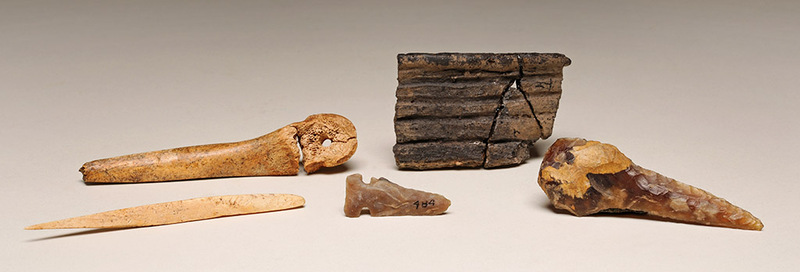
Before the 1800s, most peoples living in what is now Montana patterned life according to “seasonal rounds,” moving camp along well-established routes to follow buffalo or harvest roots and berries. The Hagen Site documents a different story—the establishment of a permanent village by a people in transition from the Eastern Woodlands to a Plains bison culture. Located on a bluff above the Yellowstone River north of Glendive, the site includes remains of at least one earth lodge, cache pits, and hearths. Oscar Lewis—a local rancher and “very capable and avid ‘semi’ professional archaeologist”—discovered the site in 1935 on land belonging to Glendive mayor Thomas Hagan.* Excavation continued during the late 1930s through the auspices of the Works Progress Administration (WPA), an employment relief program intended to create jobs during the Great Depression. Workers recovered more than twenty thousand artifacts including large numbers of ceramic fragments, stone and bone tools, and faunal, floral, and human remains. These findings indicate that the site likely represents a settlement from the period in which the Crow and Hidatsa peoples separated, sometime during the fifteenth century. The forebears of the Hidatsa remained in present-day North Dakota while the ancestors of the Crow moved west, initially retaining horticultural practices they brought with them from Knife River area. Sadly, adequate records were not kept during excavation (or were subsequently lost), and later cultivation of the land has hindered further interpretation of its history. Nevertheless, archaeologists agree that the Hagen Site remains extremely significant for the information it contains, and it was declared a National Historic Landmark in 1964.
Images
